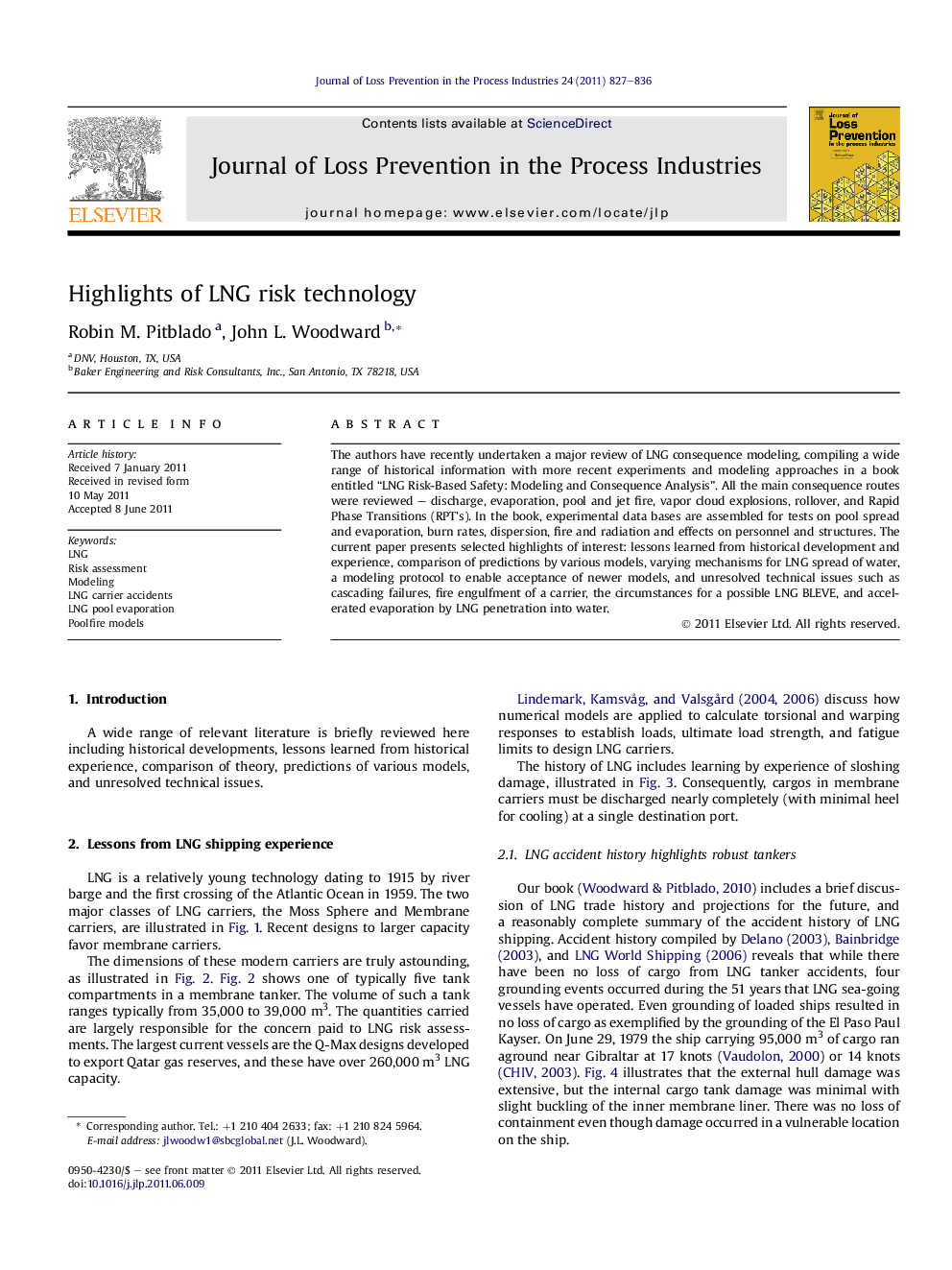| کد مقاله | کد نشریه | سال انتشار | مقاله انگلیسی | نسخه تمام متن |
|---|---|---|---|---|
| 586988 | 878244 | 2011 | 10 صفحه PDF | دانلود رایگان |

The authors have recently undertaken a major review of LNG consequence modeling, compiling a wide range of historical information with more recent experiments and modeling approaches in a book entitled “LNG Risk-Based Safety: Modeling and Consequence Analysis”. All the main consequence routes were reviewed – discharge, evaporation, pool and jet fire, vapor cloud explosions, rollover, and Rapid Phase Transitions (RPT’s). In the book, experimental data bases are assembled for tests on pool spread and evaporation, burn rates, dispersion, fire and radiation and effects on personnel and structures. The current paper presents selected highlights of interest: lessons learned from historical development and experience, comparison of predictions by various models, varying mechanisms for LNG spread of water, a modeling protocol to enable acceptance of newer models, and unresolved technical issues such as cascading failures, fire engulfment of a carrier, the circumstances for a possible LNG BLEVE, and accelerated evaporation by LNG penetration into water.
► Highlights are presented from LNG shipping experience and modeling LNG carrier collisions.
► Predictions are compared of various LNG pool spread and pool fire models compared, and the possibility is discussed of a change in burning mechanism with large pool fires.
► Controversial technical issues are treated such as whether fire engulfment of an LNG carrier could cause cascading failures, the circumstances for a possible LNG BLEVE, and accelerated evaporation by LNG penetration into water.
► A new model evaluation protocol is discussed that allows the acceptance of newer models for use in regulatory approval of LNG terminals.
Journal: Journal of Loss Prevention in the Process Industries - Volume 24, Issue 6, November 2011, Pages 827–836